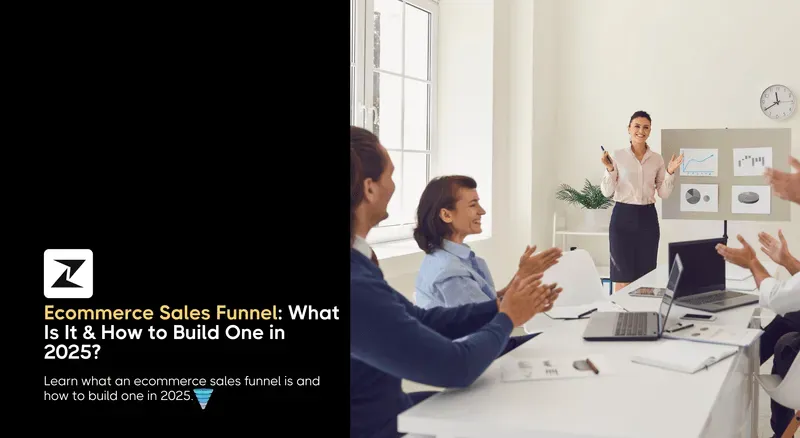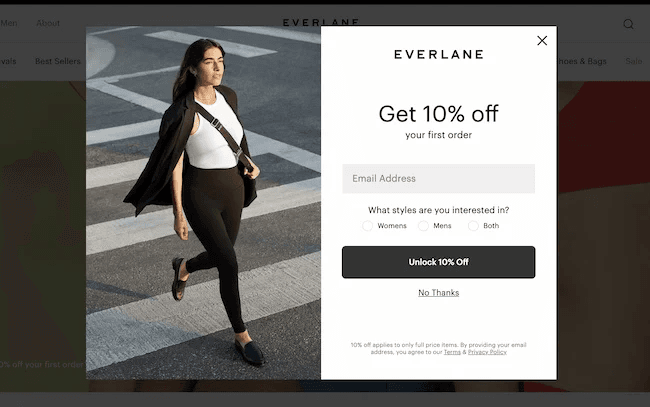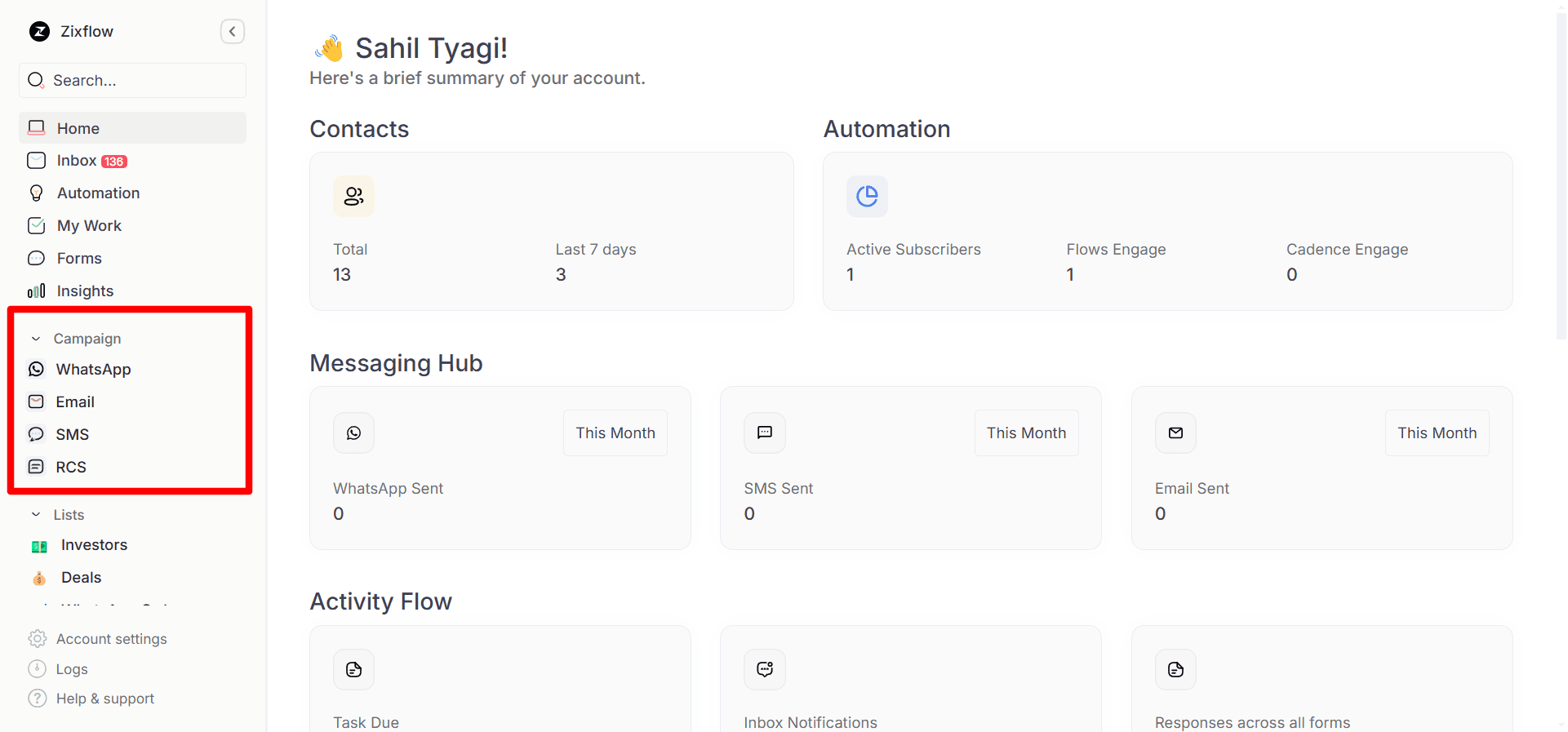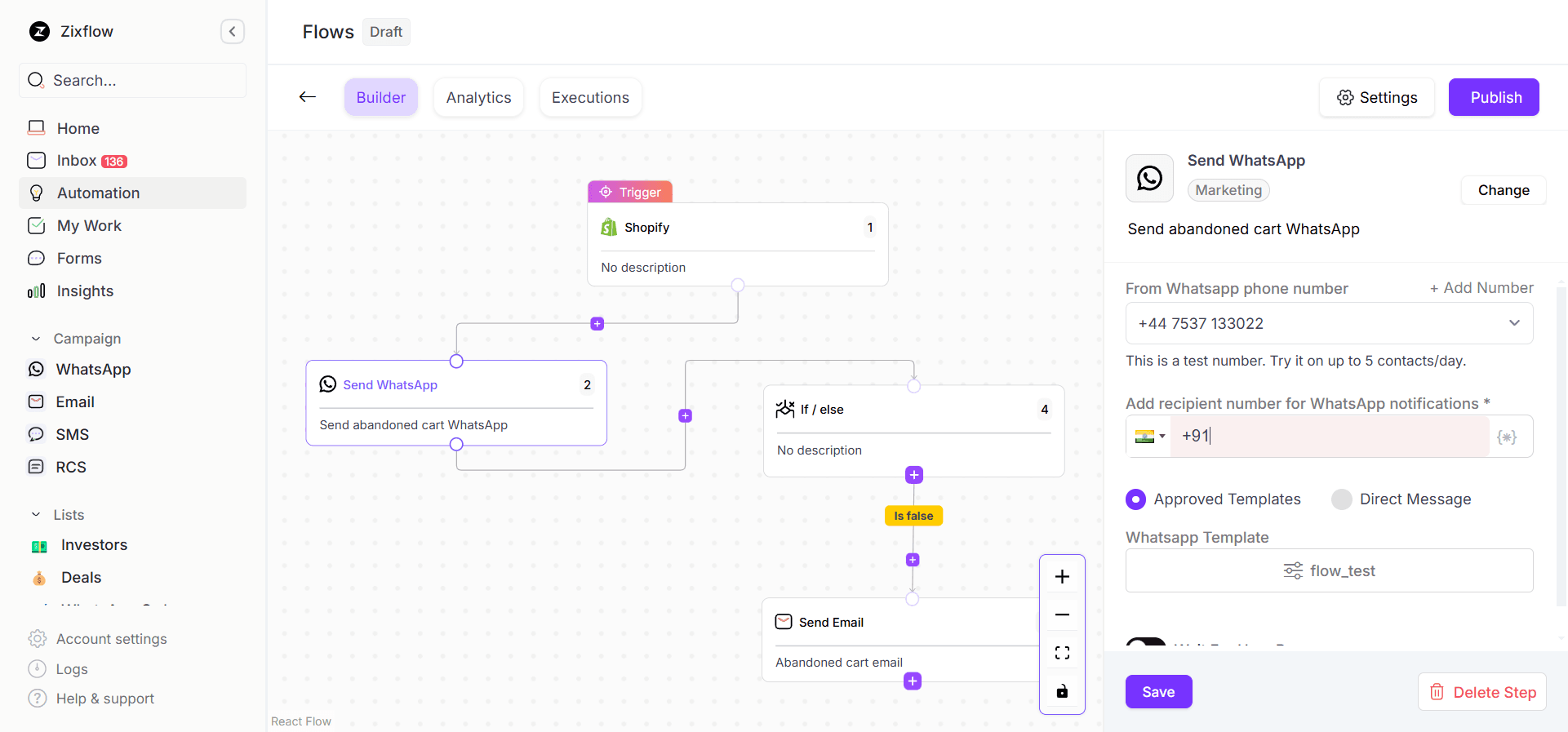Ecommerce Sales Funnel: What is It & How to Build One in 2025?

E-commerce sales funnel is an approach, where each stage a prospect goes through until conversion is depicted within the sections of a literal funnel.
Let’s say you want to buy something online. What would be the first step you would take? You will search for relevant products and go through their specs before considering whether to get them or not. After you have found the product that you were looking for, then you will compare the pricing across various e-commerce platforms to identify the best deal for yourself.
Now consider that you are an e-commerce business owner, and your customers also go through a similar process before they finally conclude to purchase your offerings. This complete process from understanding your needs and placing the order comprises the e-commerce sales funnel.
When it comes to the stages of the sales pipeline, customers constantly move across them, sometimes in the opposite direction. So, to make sure you don’t lose prospects entering the funnel, you need a good understanding of how it works, the touchpoints across it, and how you can engage leads to increase the chances of converting them later down the line.
Having said that, the sales funnel for B2B varies greatly from that of the retail or e-commerce one. So, in this blog post, I will elaborate on building an e-commerce sales pipeline along with its elements and the metrics you should monitor to evaluate the performance of your efforts. Let’s jump straight into it then!
What is an e-commerce sales funnel?
A sales funnel is a concept that follows a depiction of an actual funnel, where the leads can enter through the wide end and filter down to the bottom until only a few trickle down and exit via the narrow end. These leads are considered conversions.
Adopting the same approach for your e-commerce business you get an e-commerce sales funnel. A simplified example of an e-commerce funnel is visitors that come across your website, reach out to your support team for more information, and finally, after much consideration, purchase your product.
As your leads move down the sales funnel, you can learn more about them to further plan your e-commerce marketing efforts, delivering personalized messages and boosting your overall conversion rates.
Components of an e-commerce sales funnel?
An e-commerce sales funnel commonly includes five stages. Although some businesses consider it a four-stage process, combining both the interest and consideration stages into one. However, for the sake of understanding, I will talk about them separately.
Awareness stage
The awareness stage is the first step of the sales funnel. Often referred to as the top-of-the-funnel stage. It is where your potential customers first hear about your online business and its offerings.
Since it is the first stage of the funnel, it is the easiest to drive customers through it. Most of the marketing efforts and ads are meant to create brand awareness among your target audience. For example, brands use marketing channels like social media or television to inform leads about their products who have never heard about them before.
SEO and online advertisements are also a part of e-commerce marketing initiatives to promote your products and services. The primary objective of this marketing is to attract customers to your store, compelling them to further look into your shop.
Interest stage
After your leads are aware of your existence, next comes the interest stage. As the name suggests, here you try to pique the interest of your prospects, making them want to buy your products.
The goal at this stage is to showcase your offerings to boost curiosity and let your prospects know what makes you stand out from your customers.
Marketing emails, tailored forms, email newsletters, and visually appealing messages are some of the great ways to build interest among your prospects.
Consideration stage
After you have passed the interest stage, then comes the consideration stage. Here, the prospect is seriously considering buying your product and is looking at the specifics to get more information. The prospects are thinking about these kinds of questions:
- Should I buy this product or not?
- Should I get it from this site or can I get a better deal somewhere else?
Does this product make my life easier?
The essence of the interest stage is to demonstrate to prospects that you can relate to their pain points and have offerings to resolve them. This way, you can make them spend time conducting more research about your products, boosting the likelihood of conversions later in the future.
Conversion stage
Some businesses consider the conversion stage as the final step in the e-commerce sales funnel. For that reason, it is also known as the bottom of the funnel. In this stage, customers complete their purchases by placing the order.
As an online store, your goal in this stage is to no longer distract customers with advertising but rather get them to finish the checkout as quickly as possible.
Some of the methods to help you streamline the conversion stage are to run flash sales, time-limited exclusive deals, or personalized promotions, encouraging them to act quickly before the time runs out.
Repeat purchase stage
Finally, the last stage of the e-commerce sales funnel is the post-purchase engagement. Getting customers to make a purchase once is not a successful business model. You want customers to keep coming back for continued purchases, allowing you to maximize the customer's lifetime value.
On top of that, once a customer purchases something from your store, they become a meaningful part of your business. For example, you can transform these customers into repeat buyers by upselling or cross-selling complementary products, asking them for reviews to serve as social proof, or implementing a referral program to get more customers.
Looking for an e-commerce engagement platform?
Zixflow is a multichannel tool designed to help e-commerce brands nurture leads across all the stages of the sales funnel.
See it in ActionWhat are the steps to build a successful e-commerce sales funnel?
Since the funnel has five stages starting from building awareness to engaging customers post-purchase, your strategy should revolve around addressing common questions prospects might have.
That being said, let’s check out the steps to create a robust e-commerce sales funnel to streamline your e-commerce operations and help you convert more customers.
Awareness stage (attract potential customers)
If customers are not aware of your presence, you cannot hope to get conversions. The first step is to get your e-commerce brand known in your niche. A good place to start is to establish an online presence across the right e-commerce channels.
For instance, if your audience is active on social sites, then you might want to engage your target audience on these sites or run marketing ads to showcase your products.
Now, depending on your business and the products, you have to decide the social media sites you want to use. Here are a few of them along with the industry and the kind of marketer to best suit your needs
| Industry | Social Media Platforms | Marketing Activities |
|---|---|---|
| Fashion | Instagram, TikTok, Pinterest | Reels, shoppable posts, UGC campaigns. |
| Beauty & Skincare | Instagram, TikTok, YouTube | Influencer collaborations, before-after transformations, tutorial guides. |
| Technology | YouTube, Twitter, Instagram | Product reviews, unboxings, educational content. |
| Fitness & Health | Instagram, YouTube, TikTok, Facebook | Workout challenges, transformation stories, live Q&A, product demos. |
| Home Decor | Pinterest, Instagram, Facebook | Mood boards, DIY projects, 360° product showcases. |
| Sustainable Products | Instagram, TikTok, LinkedIn, Pinterest | Educational content, ethical brand storytelling, impact reports, user testimonials. |
| Pet Products | Instagram, TikTok, Facebook | Pet influencer collaborations, cute pet content, user-generated reviews |
| Food & Beverages | Instagram, TikTok, YouTube | Recipe videos, taste tests, live cooking sessions, UGC campaigns. |
| B2B & SaaS | LinkedIn, Twitter, YouTube | Thought leadership, case studies, webinars, industry insights. |
Once you have figured out the channels that best fit your online business, you can begin creating relevant marketing content to engage your audience.
Another great way to quickly establish a brand presence is to partner with the right sales influencers. Influencers already have a loyal following and this fact can help you establish a name for yourself quickly. To jumpstart your influencer marketing, look for influencers in your industry with a strong follower count.
Here is an example of an influencer marketing campaign run by Urban Outfitters:
Tools like BuzzSumo, Upfluence, and Heepsy can assist you in finding the right influencer for your e-commerce business. These tools offer you the necessary features to manage your influencer marketing initiatives.
Interest stage (building trust)
After the prospects are aware of your business, next comes the interest stage. Here, the focus is on generating interest within your target audience and guiding them toward the purchase. To nurture curiosity, you need to provide valuable information about your offerings and make your leads feel confident about considering a purchase.
One of the ways to go about that is to offer educational content to build trust. Since potential customers are still evaluating your product, providing them with useful content can help solidify their interest.
Blog posts, guides, and video tutorials can educate them on how your products work and why they are better than your competitors. For example, if you sell fitness apparel, an in-depth guide on “How to Choose the Perfect Workout Leggings for Maximum Comfort?” can subtly showcase your product’s value while helping customers make informed decisions.
Also, the more educational content you produce, the better you will be able to position yourself as an expert within your industry. This level of expertise boosts credibility, helping you stand apart from the crowd.
Another sales technique you can leverage in this stage to get quick conversions is offering time-limited, exclusive deals to compel users to make a purchase decision promptly. This is the moment when small incentives can make a big difference. A first-time buyer discount, a free gift with a purchase, or a free shipping deal can encourage hesitant shoppers to take action.
Exit-intent pop-ups are an excellent method to grab users’ interest. By utilizing exit-intent pop-ups, which trigger when a visitor is about to leave the site, you can present a special offer that persuades them to stay and consider a purchase.

These are just a few examples of some ways in which you can generate interest within your audiences. You have to identify what works for your e-commerce store and how your visitors react to your efforts. If you see something is showing results, keep improving upon it. Similarly, if you see that something is not showing tangible results, you look for other ways to achieve your goals.
Consideration stage (nurture leads)
Once the prospects are seriously thinking about getting your products, then they are in the consideration stage. Your objective here is to convince them that your offerings are what they were looking for and can genuinely help their issues.
Again, depending on your e-commerce store, the methods that nurture them can vary. However, the end goal remains the same, moving leads to the conversion stage.
Marketing campaigns are one of the most frequently used ways to nurture leads. Leveraging a multi-channel marketing strategy allows you to stay in touch with your audience, providing them with the useful details they need.
Channels like WhatsApp, RCS, or email can serve as huge avenues to engage customers with timely messages. In addition to that, you can automate your messaging to ensure no lead is left unattended through this stage.
E-commerce automation tools provide you with the capability to autopilot your outreach across different channels for delivering a solid marketing experience. Zixflow is a standout tool that is developed to help brands like yours interact with prospects throughout the entire sales funnel.
The platform supports multiple channels including RCS, WhatsApp, SMS, and email. This fact enables you to run omnichannel marketing initiatives to engage leads on their preferred choice.

Automating your marketing is just as crucial as having a multichannel approach. After all, you cannot keep track of each lead manually. So, setting up automated campaigns can keep the leads engaged by sending personalized, relevant offers.
You can put in place automated workflows using our code-free editor to send predefined messages based on the actions of your prospects or at a particular time. The builder is designed in such a way that it is super easy to use. Simply drag and drop the nodes, set the triggers & conditions, and automate repetitive e-commerce tasks for streamlined processes.
Unlike B2B sales, where there are a lot of chances of converting a lead, e-commerce does not have this liberty. Leads commonly add a product to their carts but exit without finishing the checkout. In fact, the average abandoned cart rate in e-commerce is around 70%.
This goes to show that you have to retarget these abandoned carters to return and place their order. Running retargeting campaigns will allow you to keep the abandoned rate under control. To do that, you can deploy workflows to track cart abandonments and send automated offers to get them to come back.

Conversion stage (create streamlined shopping experience)
Finally, now is the time to close the deal. You would not want to miss out on a sale just when a lead is ready for one. In this stage, you don’t need to actively do anything. Instead, you want to remove unwanted distractions to avoid losing prospects at the final stage.
To start with, create a seamless checkout process with multiple payment options and gateways to give customers the choice to pick the one depending on their preference. You can also implement a one-click checkout offered by various e-commerce platforms like WooCommerce, Shopify, and BigCommerce.
Make sure that the payment pages display trust factors like secured payment, SSL certifications, easy return policy, or money-back guarantee. These factors further reduce friction during the checkout by providing peace of mind and ensuring customers that their sensitive details are safe.
Build a solid e-commerce sales funnel to optimize customer journey and boost your revenue
When it comes to enhancing customer journeys, there are various aspects you need to consider. No matter whether you are making small adjustments or major changes, it can lead to a better shopping experience, which ultimately results in boosting your bottom line.
Your e-commerce sales funnel should always revolve around your audience and their pain points. Understanding what they want across each stage and giving them the relevant information can greatly increase the probability of getting conversions.
By having a robust sales funnel in place for your e-commerce store, you are paving the way for your business to scale effectively.
On your journey to become great, Zixflow can match your pace while also providing you with essential features, ensuring you don’t slow down or lose customers. Schedule a demo with our experts to see how we can help you automate your customer engagement and build long-lasting relationships for prolonged business success.
